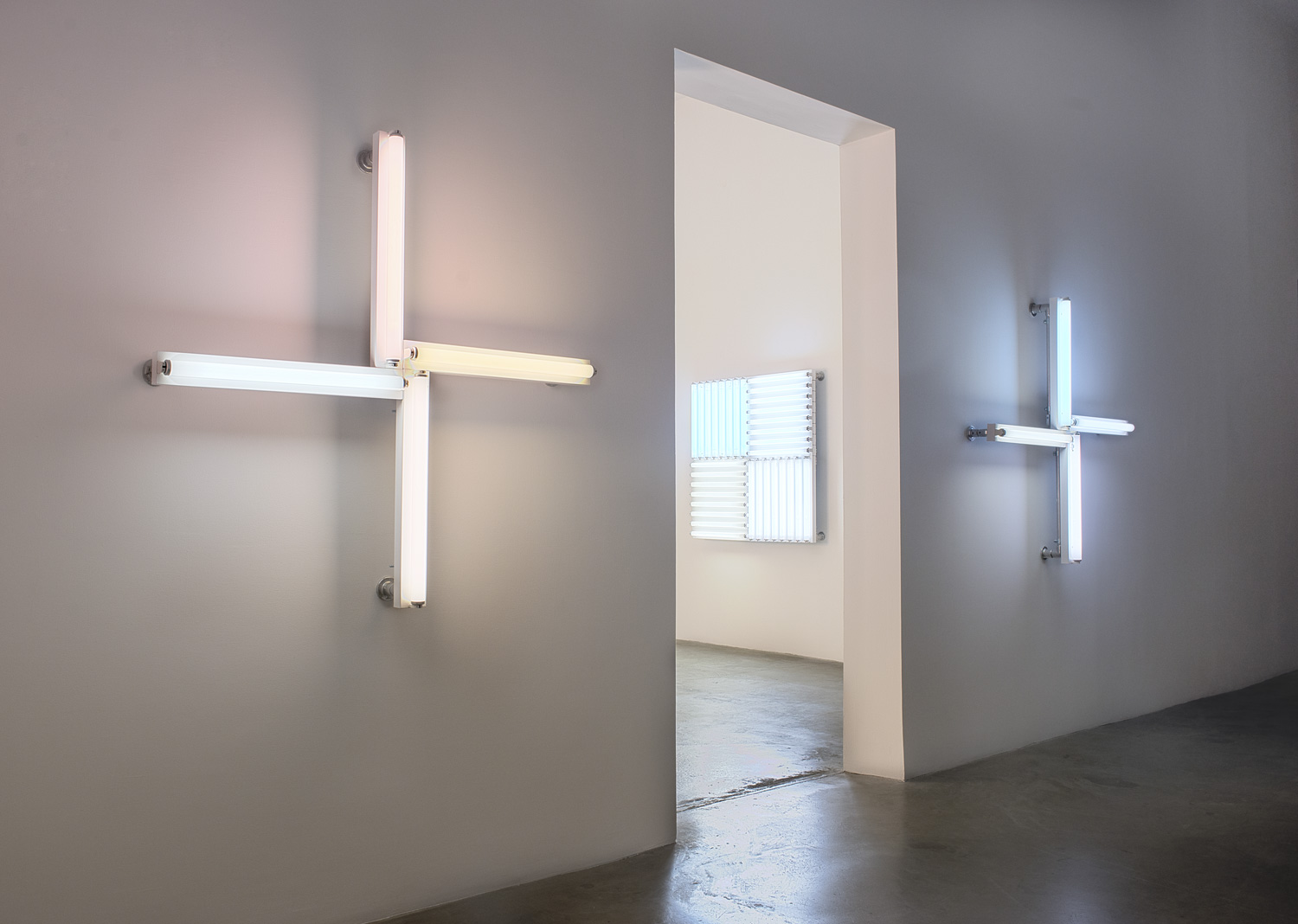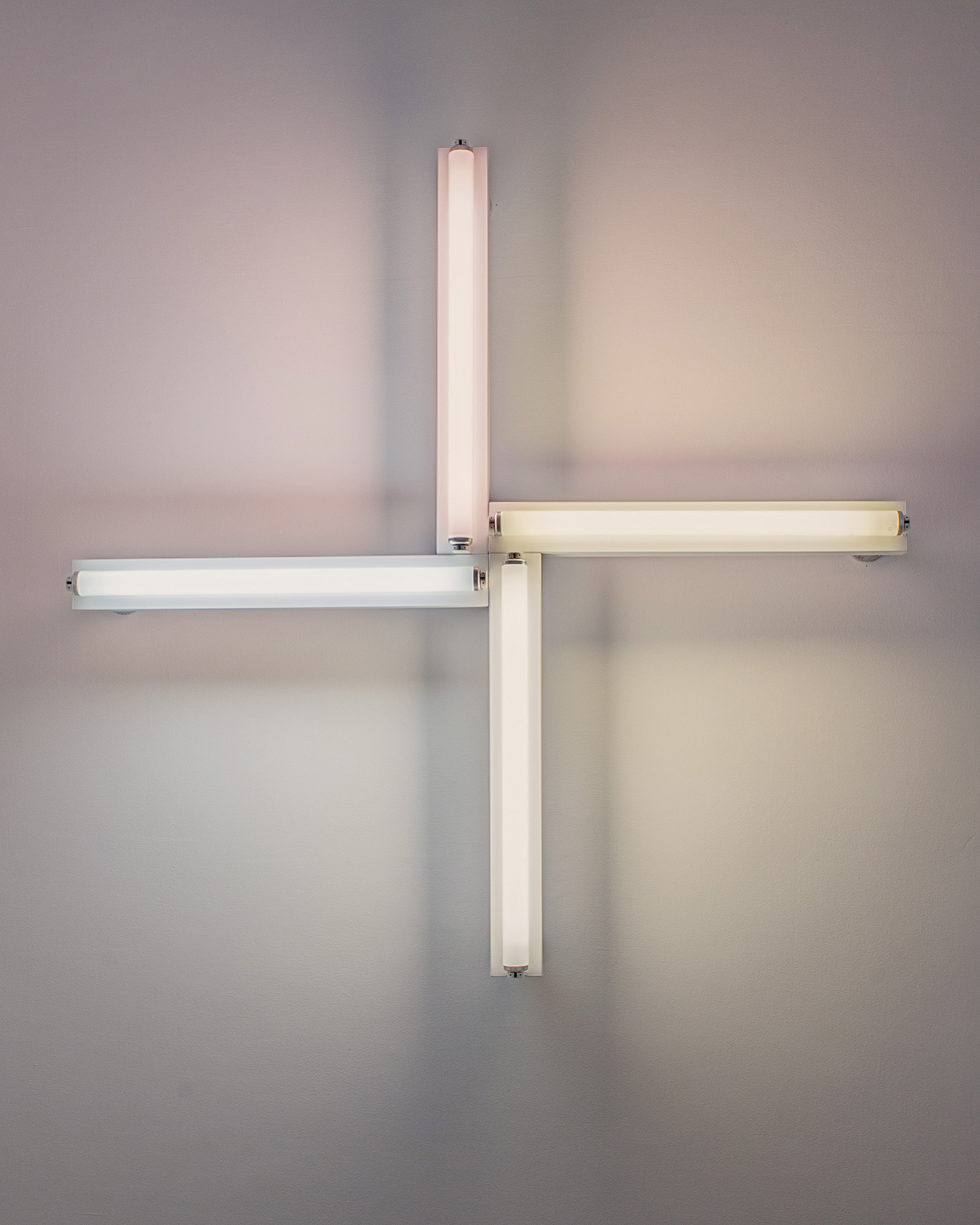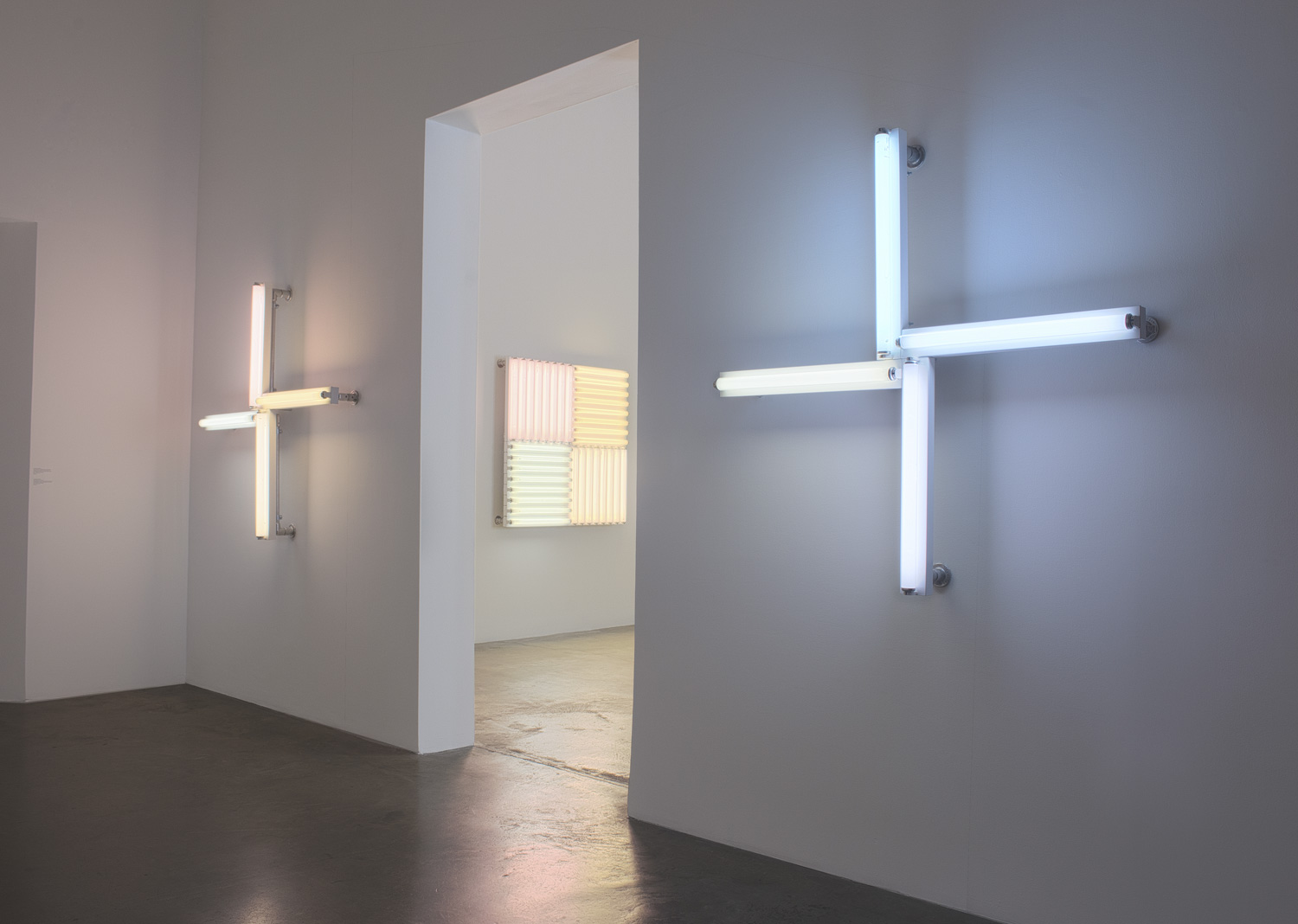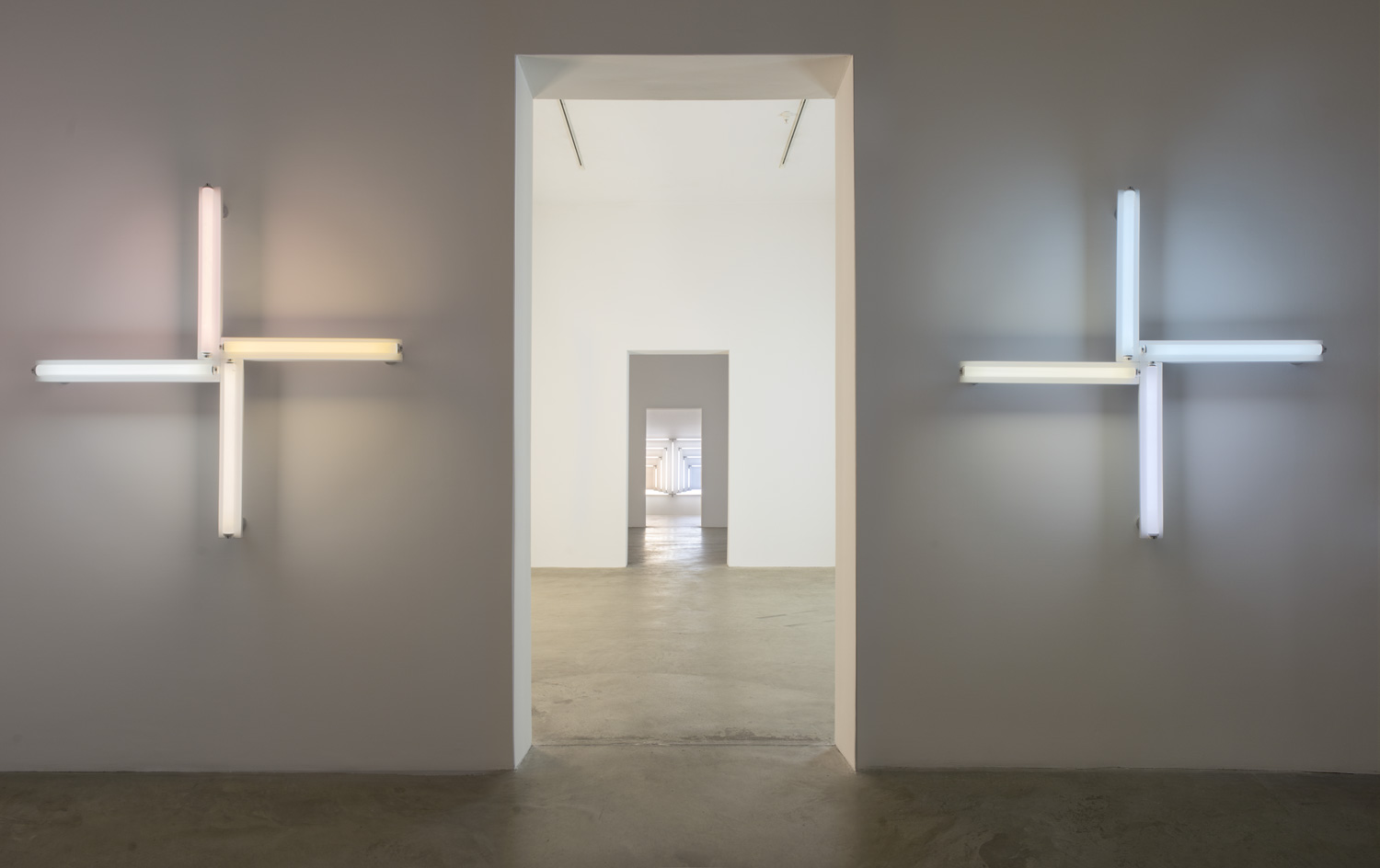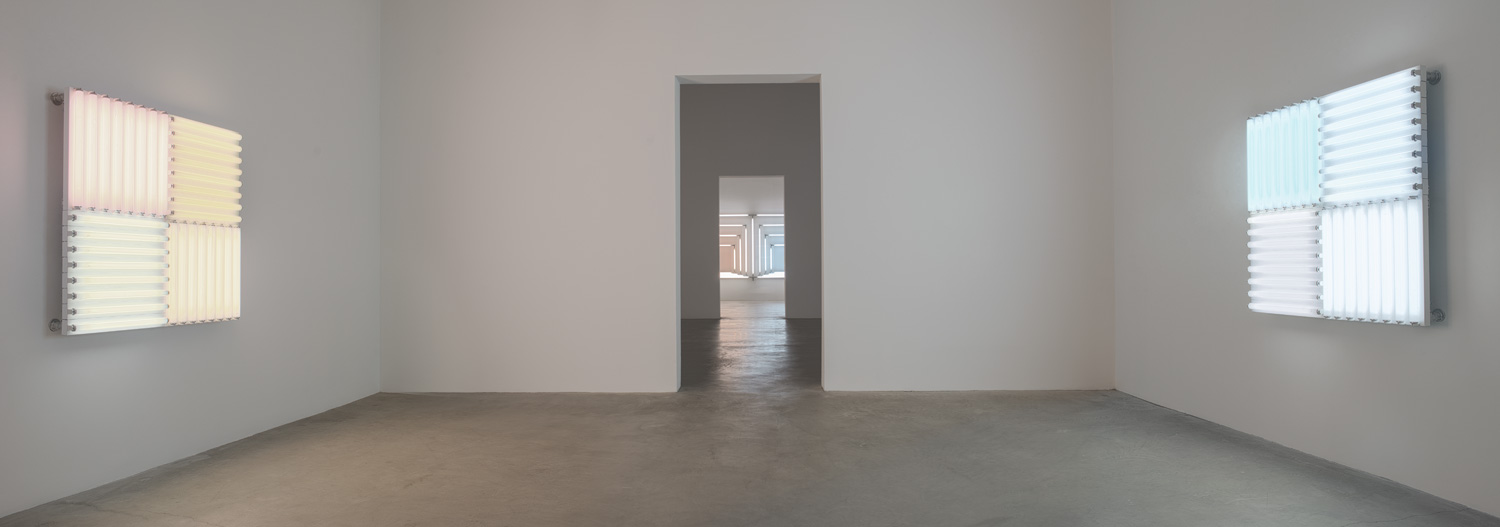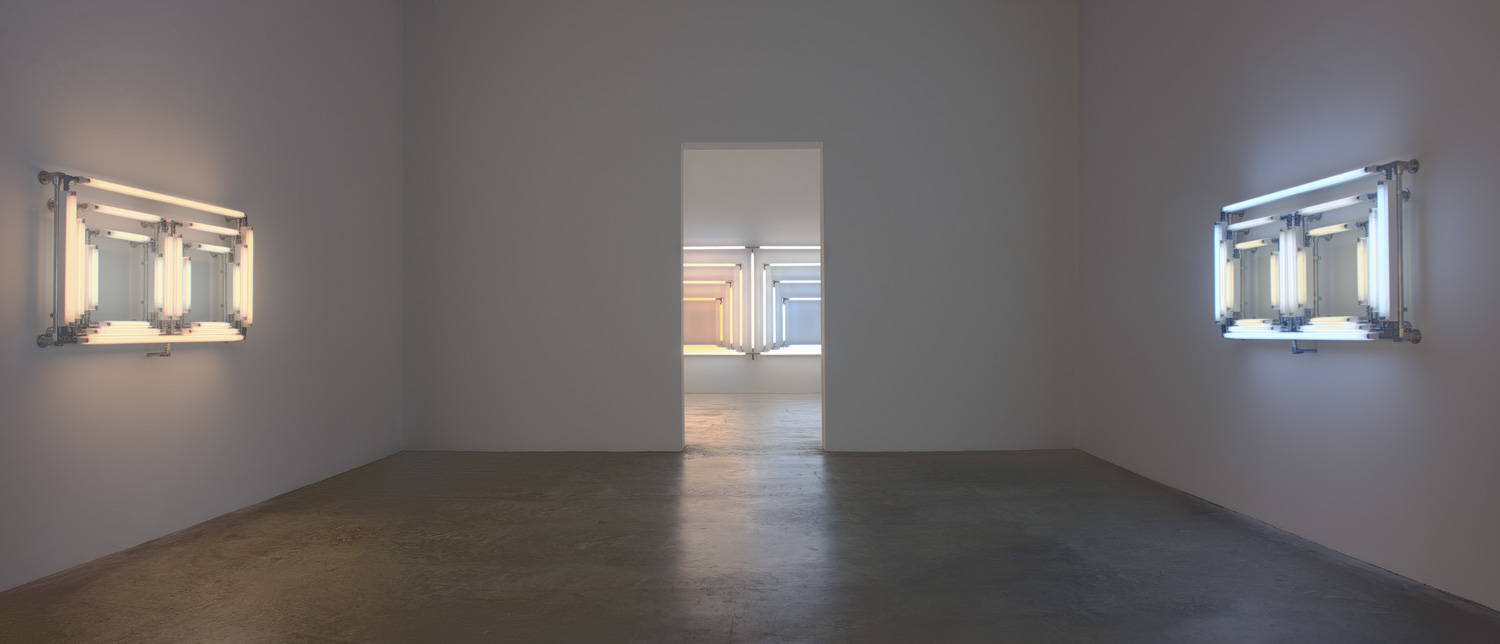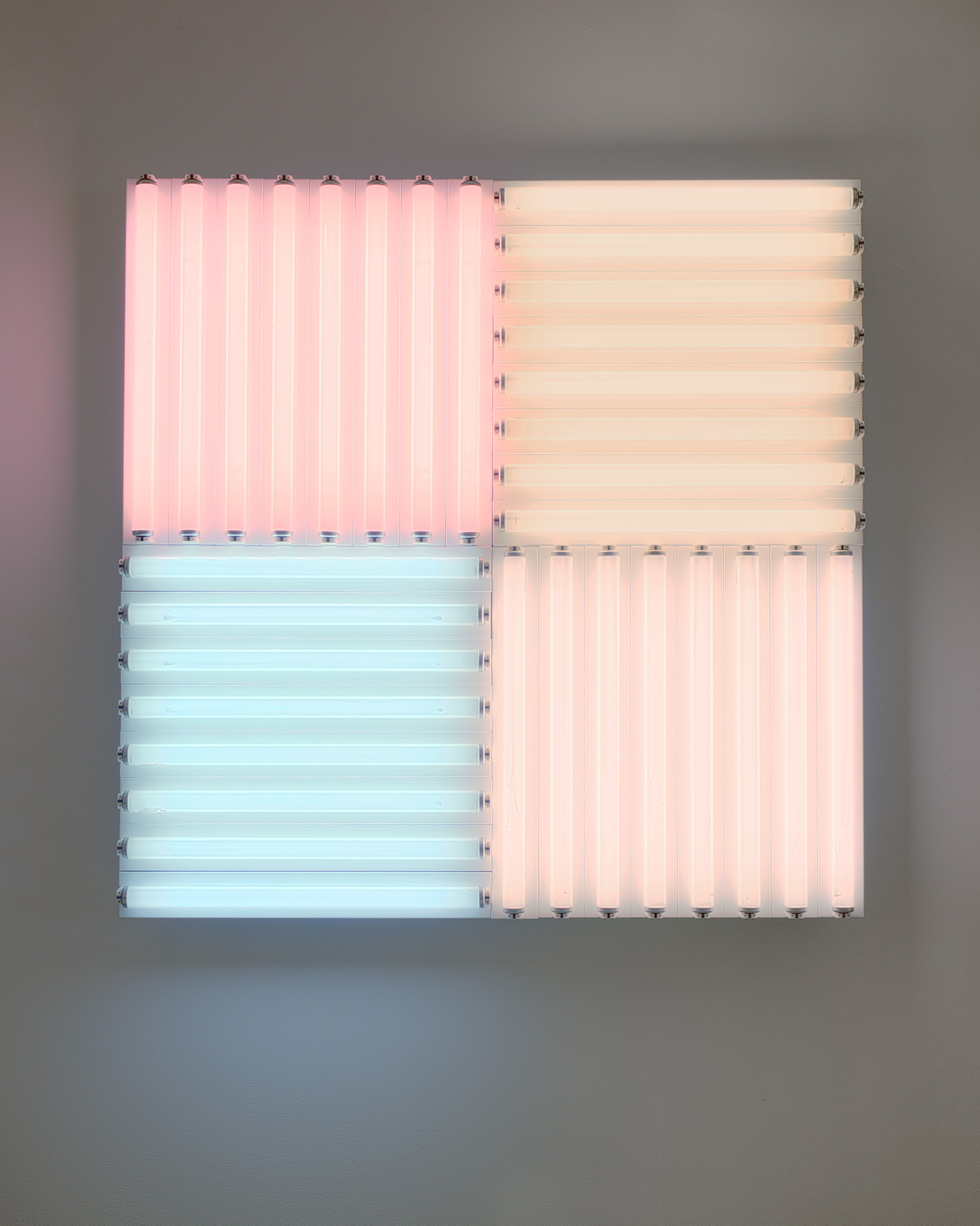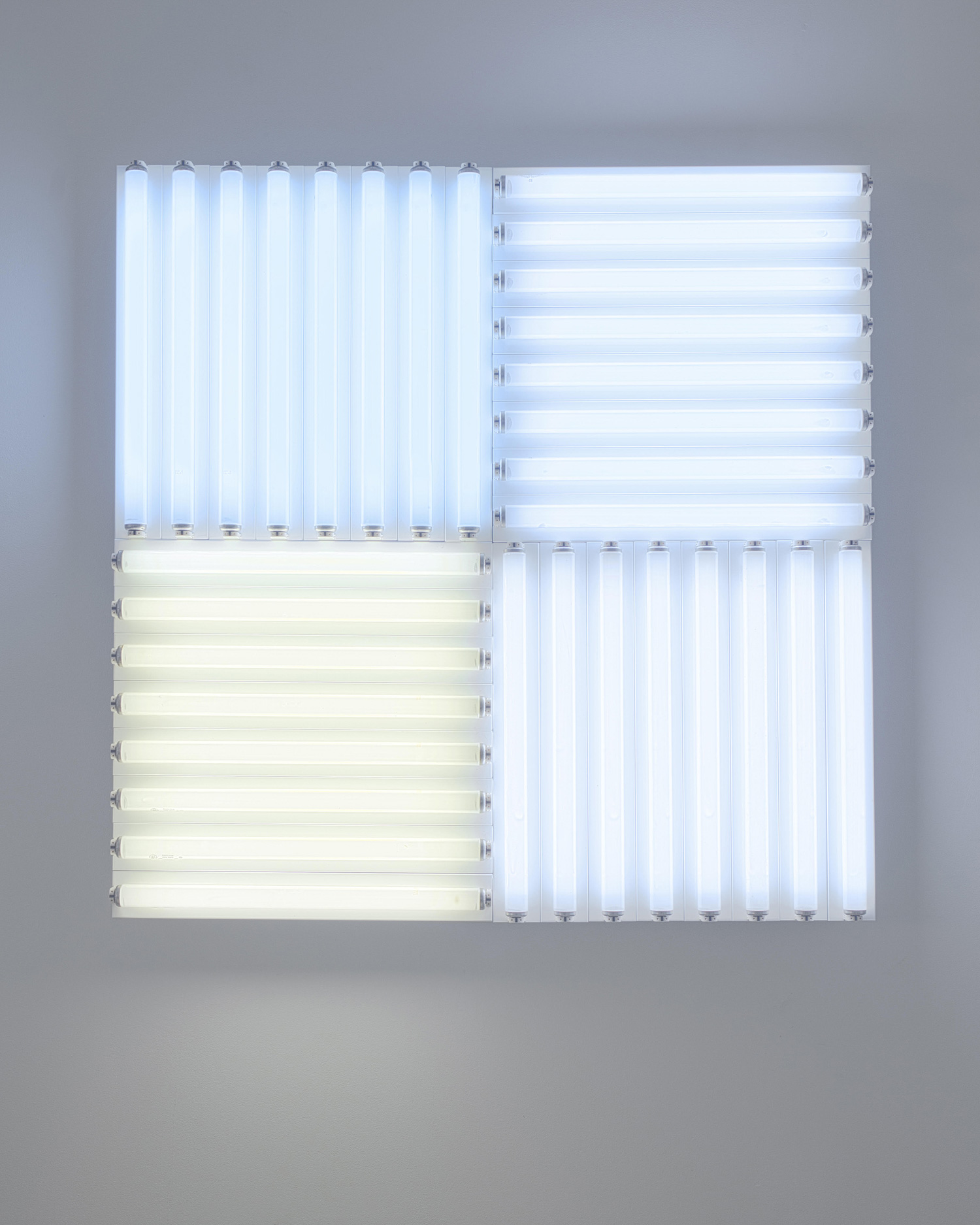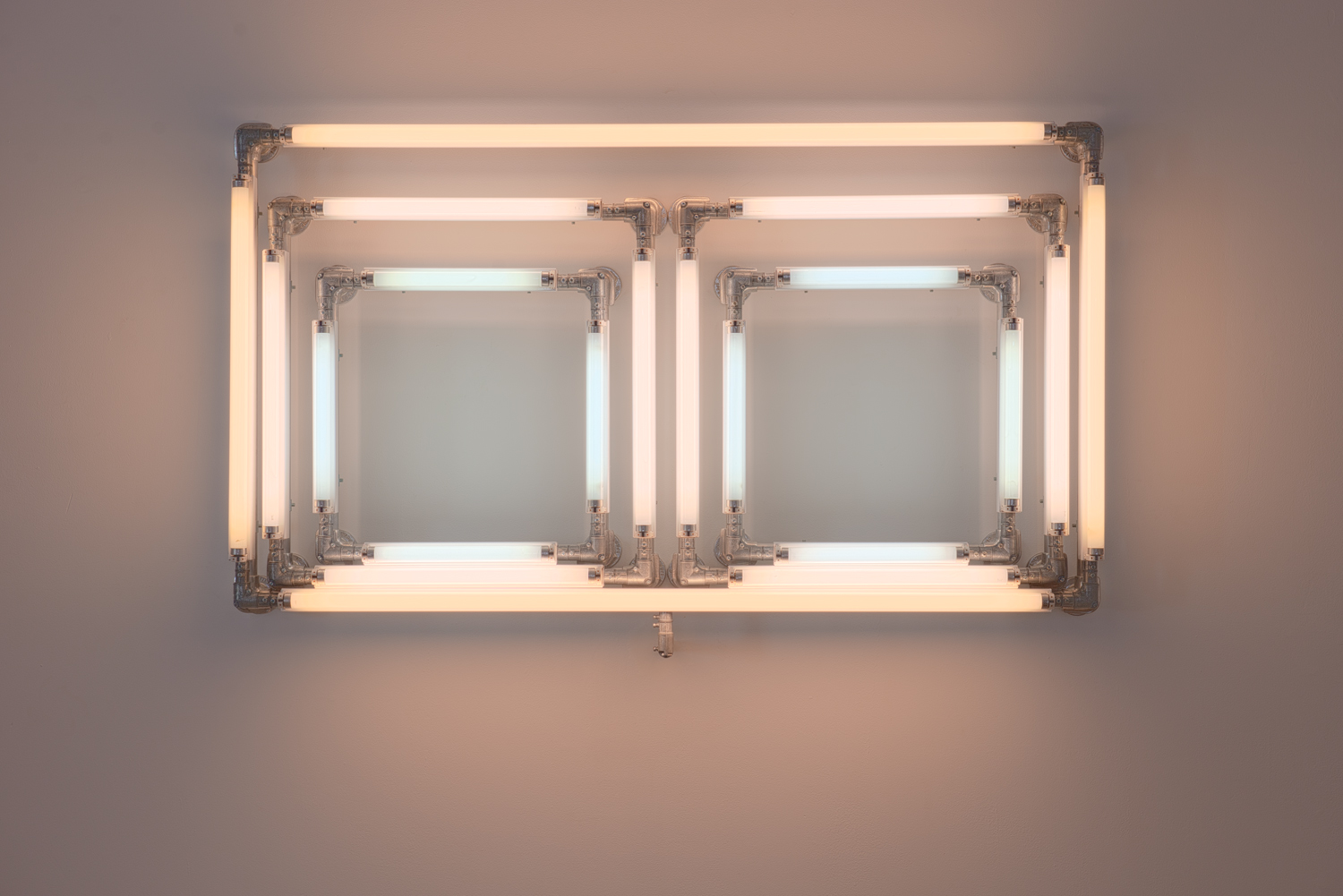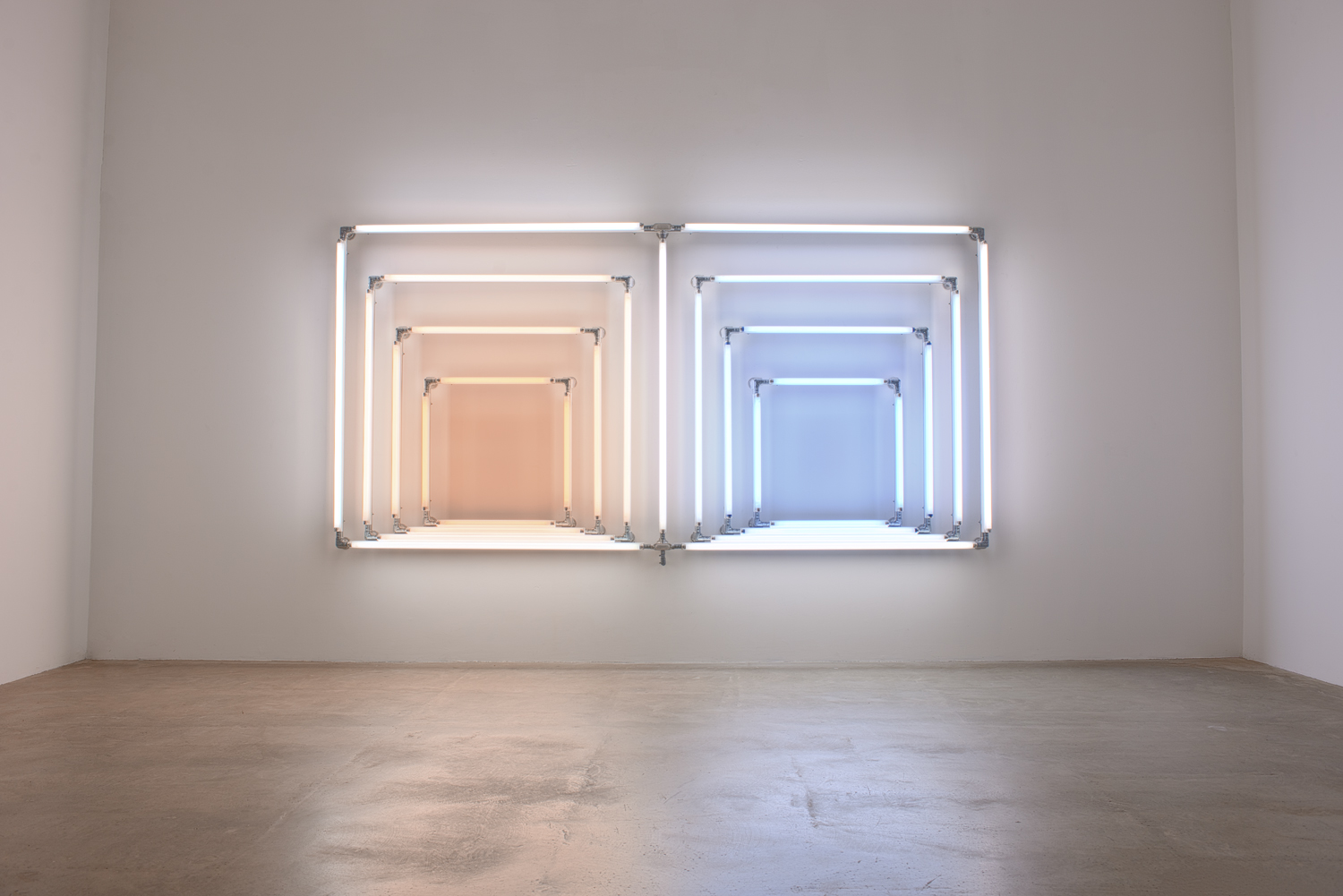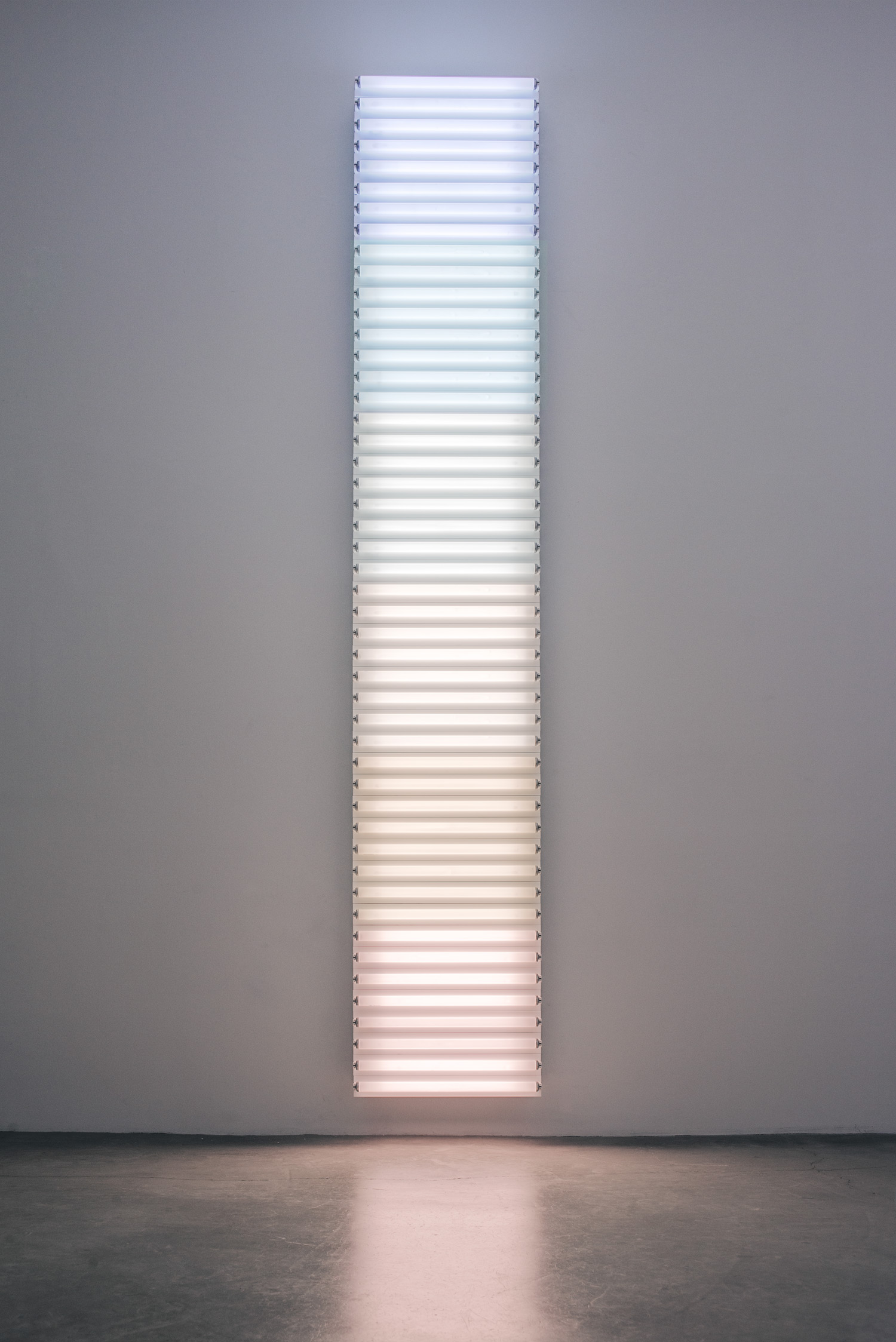light/WHITE
Ace Gallery, Los Angeles
2016
The exhibition, titled light/WHITE is Carson’s fourth solo exhibition at Ace and is comprised of her most recent light/ALBERS and light/VERTICAL sculptures. Drawing upon the histories of East Coast Minimalism and West Coast Light and Space movements, Heather Carson’s sculptures are formal and conceptual investigations into the properties of light. This body of work focuses on color theory in relation to light by investigating variations in proximal color temperatures of white light. When Carson began her investigation into light/WHITE, she drew inspiration from Josef Albers’ studies for Homage the Square. His use of shades of grey triggered the idea of exploring the use of shades of white light and shadow instead of color. Carson’s light/ALBERS sculptures lead (led?) to further investigations of white light in her light/LINES and light/VERTICAL series. Carson has long been fascinated by industrial light sources such as sodium vapor and metal halide, as well as fluorescent tubes. Her aesthetic is determined by her choice of materials, which emphasize the physicality, rather than the opticality of light. Embracing a heavy, industrial aesthetic, Carson does not mask the electrical components of her work. Rather, she openly displays the armatures and joints connecting the fluorescent fixtures. In the light/VERTICAL pieces, these elements are invisible from the front but are critical to the pieces’ architectural engagement when viewed from the side,. Carson’s unique aesthetic has been dubbed “simultaneously ephemeral and muscular”1 by Los Angeles Times writer Christopher Knight. In her light/VERTICAL series, Carson uses fixtures that are no longer mass produced and have been custom-made to her specifications so that the presence and absence of light are equidistant. Carson states “the fixture is as important to me as the light, it is not merely the carrier.” Shana Nys Dambrot writes that Carson’s work is “about conditions unique to the use of electric light as a formal element in fine art.”
